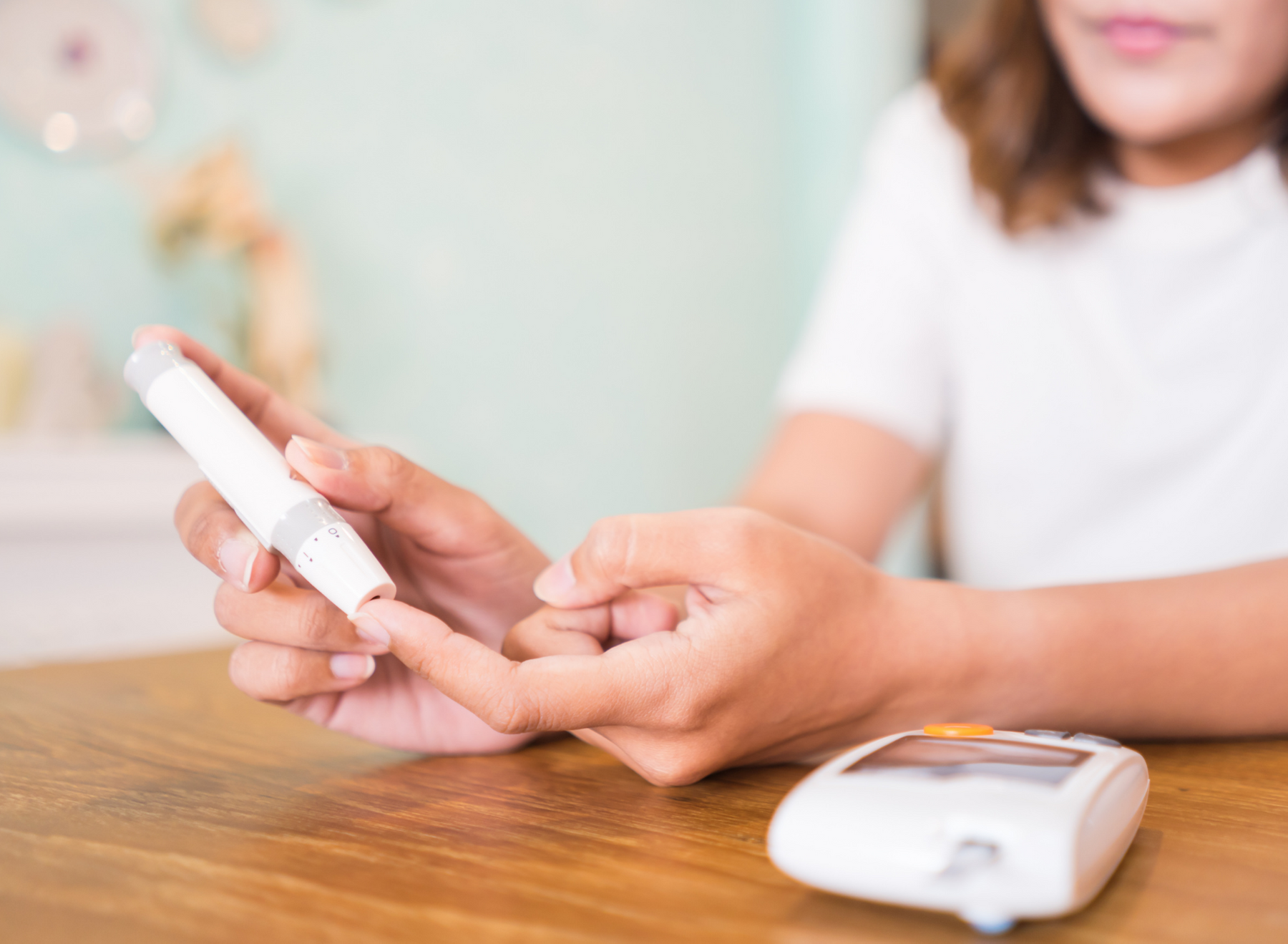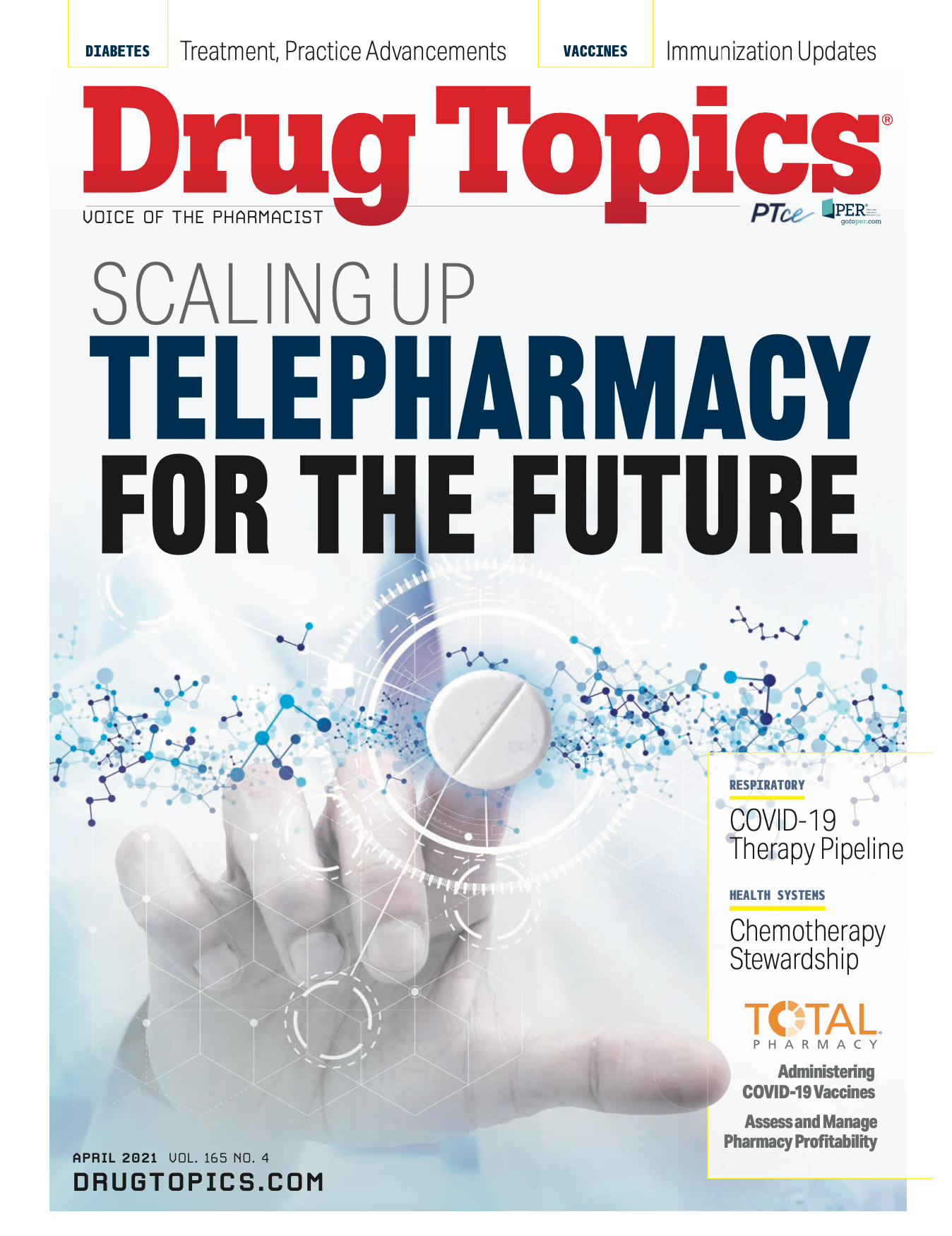COVID-19 has flooded media headlines and health care practices for the past year, but diabetes has not taken a pandemic holiday. Professional groups continue to publish and update practice guidelines and the FDA continues to work on new diabetes drug applications. During a virtual session titled New and Approved: Your Annual Diabetes Update at the American Pharmacists Association Annual Meeting and Exposition, which was held March 12-15, Jennifer D. Smith, PharmD, BCACP, BC-ADM, CDCES, a clinical pharmacy specialist for the US Department of Veterans Affairs, provided an update on treatment advances in the type 2 diabetes (T2D) space.1
Continuous Glucose Monitoring
The FDA has approved continuous glucose monitoring (CGM) for ambulatory care, but pandemic pressures are spurring the use of CGM in all practice settings, especially inpatient.
“You are going to see more CGM in the hospital setting,” said Smith during her presentation.
The FDA has not approved CGM for inpatient use, Smith noted. But a growing number of institutions are using CGM to reduce patient contact and consumption of personal protective equipment during the pandemic. As health system practices and procedures increasingly promote CGM, pharmacists should remember that CGM is not appropriate for intensive care or other critically ill patients, Smith said. All CGM use should be supervised to ensure that appropriate adjustments to insulin doses can be made in a timely manner.
The American Diabetes Association (ADA) guideline goal for CGM is to maintain patients within their target glucose range at least 70% of the time, she noted.
New Glycated Hemoglobin Targets
It is also important to individualize glucose targets, according to Smith. The ADA’s global glycated hemoglobin (A1C) target is less than 7%. New 2021 guidelines target from less than 7% to less than 7.5% for healthy adults aged 55 years or older. Patients with complex cases might do better with an A1C target of less than 8%. However, in very complex cases, targeting A1C goals may not be helpful.
“Instead, let’s keep our patients comfortable and avoid glycemic extremes,” Smith said. “The goal is to avoid all hypoglycemia and any symptomatic hyperglycemia.”
Chronic Kidney Disease
The Kidney Disease: Improving Global Outcomes Diabetes Work Group issued its first-ever practice guidelines for diabetes management in chronic kidney disease (CKD) in late 2020.
Angiotensin-converting enzyme inhibitor (ACEi) or angiotensin II receptor blockade treatment should be initiated for patients with diabetes, hypertension, and albuminuria. Titrate medications to the highest tolerated dose.
A1C is the appropriate measure of glycemic control, but A1C accuracy and precision declines with advanced CKD, in dialysis, or when using erythropoietin-stimulating agents. Individualize A1C targets from less 6.5% to less 8.0% based on comorbidities. A glucose management indicator derived from CGM may be useful for glycemic assessment, especially in patients for whom A1C is not accurate because of declining kidney function, dialysis, or other treatment factors.
Metformin plus a sodium-glucose cotransporter 2 inhibitor (SGLT2i) can be used as a first-line treatment for T2D in CKD. Avoid SGLT2i treatment if the patient has an estimated glomerular filtration rate (eGFR) below 30 mL/min/1.73m2 and stop SGLT2i in dialysis. The preferred agents for patients with a low eGFR are a dipeptidyl peptidase 4 inhibitor, insulin, or a thiazolidinedione. The preferred add-on agent for all patients is a long acting glucagon-like peptide-1 (GLP-1) receptor agonist.
The ADA takes a different approach. For patients with CKD and no albuminuria, the ADA recommends a GLP-1 receptor agonist or SGLT2i with proven cardiovascular disease benefit. For patients with CKD and albuminuria, use a SGLT2i with a documented reduction in CKD progression. For patients who cannot use a SGLT2i, a GLP-1 receptor agonist is acceptable.
Dyslipidemia
The American Association of Endocrinology (AACE) and the American College of Endocrinology (ACE) published a new algorithm for the comprehensive management of dyslipidemia and prevention of cardiovascular disease in late 2020. Lifestyle changes remain the primary management tool, but treatment recommendations have been updated since AACE/ACE last addressed dyslipidemia in 2017.
The low-density lipoprotein cholesterol (LDL-C) goal for high-risk patients with diabetes and no other risk factors is 100 mg/dL. The triglycerides (TG) goal is less than 150 mg/dL. Recommended treatment is a moderate- to high-intensity statin as needed. Major risk factors include advancing age, elevated nonhigh-density lipoprotein cholesterol (HDL-C), elevated LDL-C, reduced HDL-C, diabetes, hypertension, CKD, cigarette use, or family history of atherosclerotic cardiovascular disease (ASCVD).
For very high-risk patients who have diabetes with 1 or more risk factors, the LDL-C goal is less than 70 mg/dL and the TG goal is less than 150 mg/dL. Add ezetimibe, a PCKS9 inhibitor, colesevelam, or bempedoic acid, depending on LDL needs.
For extreme risk patients with established clinical ASCVD and diabetes, the LDL-C goal is less than 55 mg/dL and the TG goal is less than 150 mg/dL. Add a PCKS9 inhibitor, ezetimibe, colesevelam, or bempedoic acid, depending on LDL needs. For patients with diabetes, 2 or more risk factors and TG 135-499 mg/dL, add icosapent ethyl.
Heart Failure
For patients with heart failure with reduced ejection fraction (HFrEF), left ventricle ejection fraction less than 45%, the ADA recommends a SGLT2i with proven heart failure benefits. Prescribers have multiple choices, according to Smith.
Two agents, dapagliflozin and empagliflozin, have primary heart failure outcome data.
Three agents––empagliflozin, canagliflozin, and dapagliflozin––have shown reduction in heart failure and reduction of CKD progression in cardiovascular outcome trials.
Overbasalization
The 2021 ADA guidelines introduced a new concept: overbasalization, which is characterized as an excessive basal dose of insulin. Too much basal insulin can overcorrect fasting glucose levels, which then rebound to excessive levels, Smith explained. Typical examples of overbasalization are an elevated bedtime-morning glucose differential, greater than 50 mg/dL, an elevated post-preprandial differential, hypoglycemia, and high glucose variability.
Guidelines noted overbasalization is a potential concern anytime the basal dose exceeds 0.5 units/kg/d, Smith said. Any indication of overbasalization should prompt reevaluation of insulin dosing to reduce glucose variability.
Glucocorticoid Therapy
High-dose glucocorticoids can increase the need for insulin. Patients with diabetes who start high-dose prednisone for an asthma flare, for example, need a corresponding increase in insulin. Neutral protamine Hagedorn insulin protocol is the standard approach for once daily or twice daily steroids, Smith said.
Insulin formulation and dose should match the steroid. A long-acting steroid needs a long-acting insulin and increasing doses of steroids need increasing doses of basal, prandial, and correctional insulin. The ADA recommends an increase of 0.1 IU/kg of insulin for each 10 mg/d of prednisone to a maximum of 0.4 IU/kg for 40 mg or more of prednisone.
Key Safety Changes for Diabetes Therapies
Jennifer D. Smith, PharmD, BCACP, BC-ADM, CDCES, a clinical pharmacy specialist for the US Department of Veterans Affairs, highlighted recent safety changes for diabetes treatments that pharmacists should know:
- Canagliflozin has lost its black box warning for lower-limb amputation. However, an increased risk of lower-limb amputation remains in the label warning and precautions section.
- An FDA safety communication recommends stopping canagliflozin, dapagliflozin, and empagliflozin at least 3 days prior to scheduled therapy. Ertugliflozin should be stopped at least 4 days before surgery. All 4 agents can be restarted after surgery.
- New data also suggest stopping sodium-glucose cotransporter 2 inhibitor therapy before scheduled surgery to lessen the risk for ketoacidosis.
New Agents Coming
At least 4 new agents are in the pipeline, Smith reported.
- Tirzepatide, a once-weekly “twincretin” combination of a GLP-1 receptor agonist and a glucose-dependent insulinotropic polypeptide, showed solid phase 3 data in T2D. A cardiovascular outcomes trial is ongoing.
- Finerenone, a nonsteroidal selective mineralocorticoid receptor antagonist, reduced the risk of composite cardiovascular outcomes in patients with CKD and T2D in the FIDELIO-DKD trial (NCT02540993). The agent’s application has been submitted to the FDA, she said, and a decision is expected sometime this summer.
- Dasiglucagon, a prefilled rescue pen for severe hypoglycemia, is under review by the FDA.
- Insulin icodec, a once-weekly basal insulin, showed efficacy and safety profiles similar to once-daily insulin glargine U100 in T2D.
“Even with all these changes, we cannot underscore more the benefits of lifestyle and nutrition management,” Smith said. “Whole-food, plant-based, Mediterranean, and DASH [dietary approaches to stop hypertension] diets remain the bedrock of therapy for diabetes and ASCVD risk reduction. Physical activity is key, and treatment must be tailored to the patient.”
Reference
- Smith JD. New and approved: your annual diabetes update. Presented at: American Pharmacists Association 2021 Annual Meeting and Exposition; March 12-15, 2021; virtual. Accessed March 12, 2021. https://apha2021.pharmacist.com/

